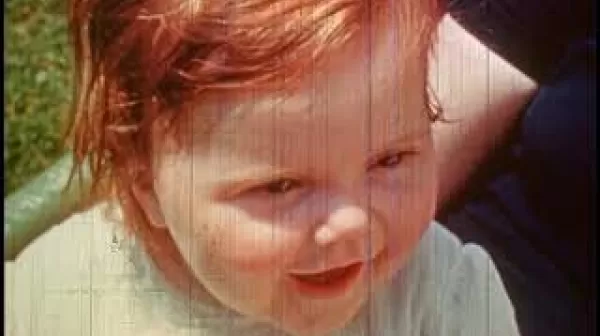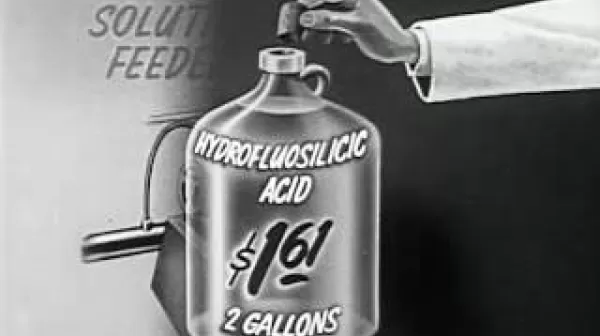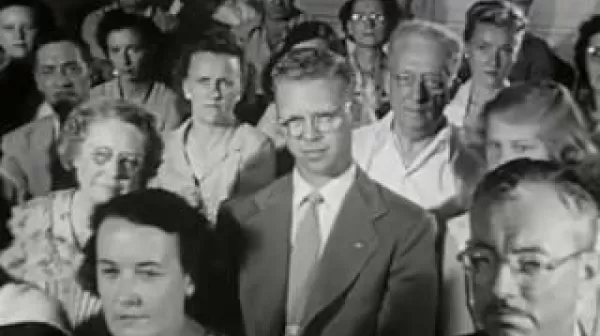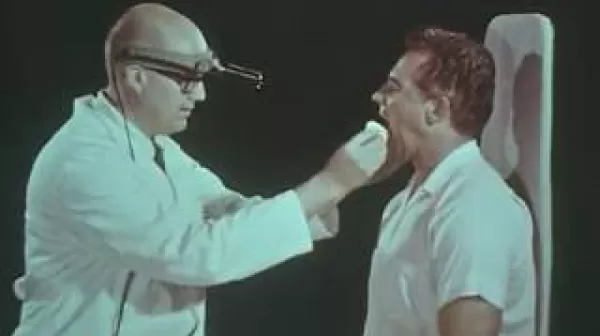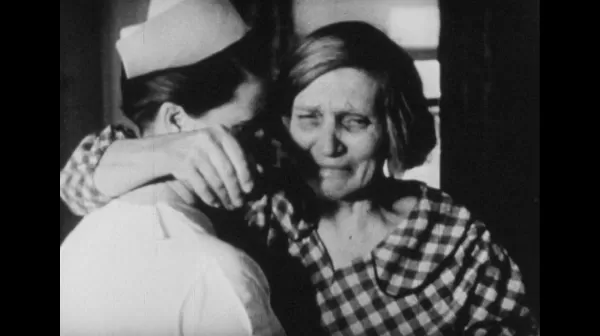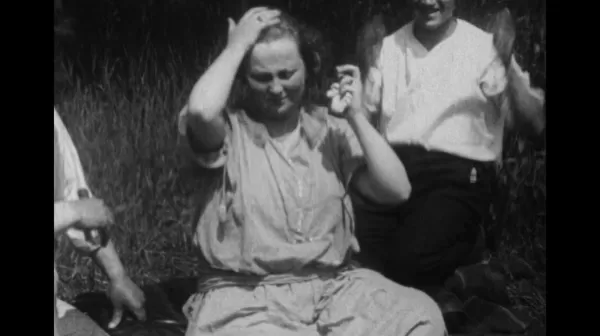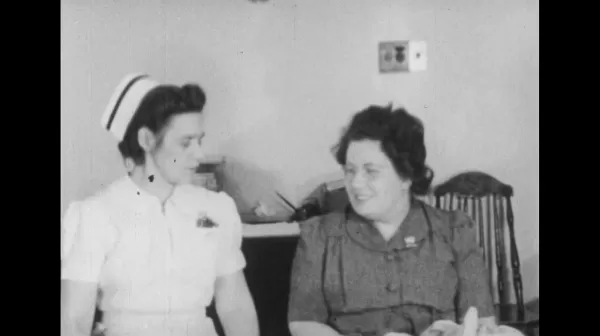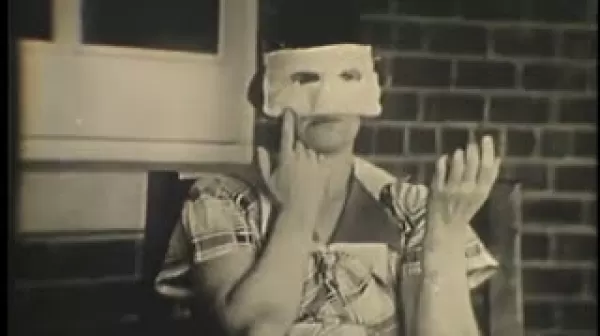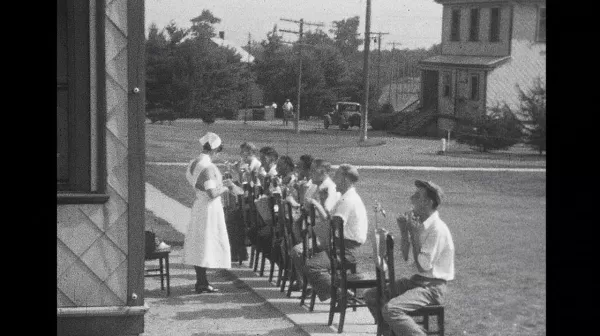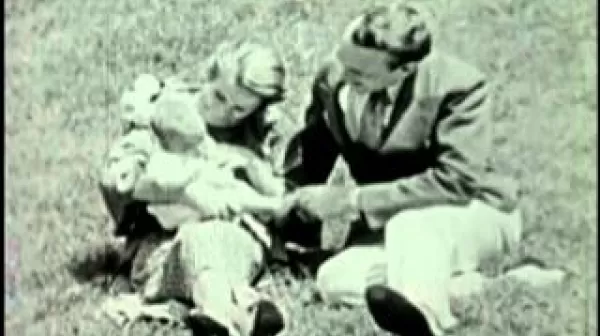Behind the Smile (St. Louis District Dairy Council, 1939)
The importance of a healthy, charming smile from childhood to old age is stressed. Good teeth are necessary for a good smile. Proper dental care begins in utero. A physician shows a pregnant woman a chart picturing the foods she should eat. Regular visits to the dentist should begin at about age two years. A dentist waiting room filled with children is shown. A toddler and little boy are examined by the dentist in his surgery. Care of the temporary teeth is advocated. The dentist shows the boy how to brush his teeth.

